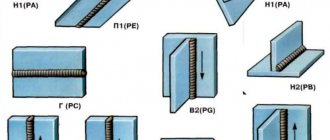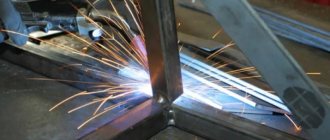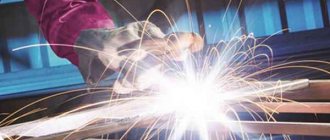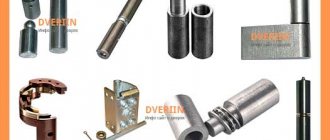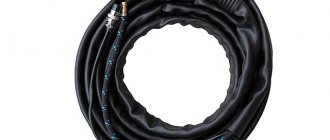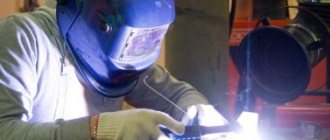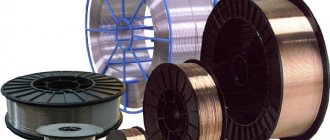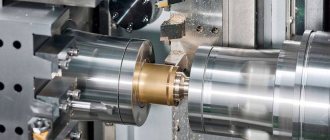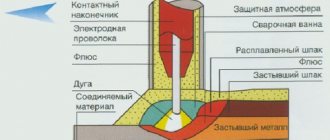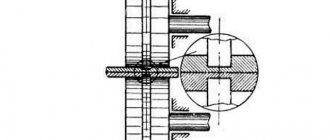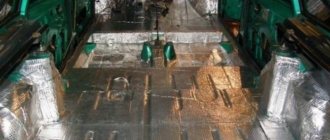Modern welding technologies and their applications
Author:
Alexander Sitnikov, specially for Equipnet.ru Photos from the site aztpa.ru, tehsovet.ru
The history of the permanent connection of metals by heating them and dynamically influencing each other begins with the Bronze Age. We now call this process welding, which began to acquire modern features at the end of the 18th century thanks to the Italian A. Volta, who first received a voltaic column. Subsequently, it was improved by the Russian physicist V.V. Petrov into an electric arc. But only 80 years later N.N. Benardos managed to translate their achievements into carbon arc welding. From this moment on, an unbroken series of inventions of new methods begins.
Nowadays, welding is classified into categories: thermal (welding arc, electric arc, gas flame, electroslag, plasma, electron beam, laser), thermomechanical (spot, butt, relief, diffusion, forge, high-frequency current, friction welding) and mechanical (welding explosion and ultrasound).
The quality of seams during hybrid laser welding of structural steels of volumetric honeycomb panels in CO2 with the parallel use of a melting electrode is disproportionately higher than in traditional technologies; The welding speed is also significant - 40...450 m/h with controlled laser radiation from 1.5 to 4.0 kW. The undoubted advantage of this method can be considered the mode of high-speed welding of thin steel sheets, which is of interest to the automotive industry .
For high-performance welding of large-sized structures made of thick sheet (d> 30 mm) hardening steel 30KhGSA, a double-arc welding method was developed , which is based on the joint use of two high-alloy welding wires of different compositions with a diameter of 5 mm. Welding is performed using ANK-51A ceramic flux. Test results have shown that this method dramatically improves the quality of the welded joint.
Another incentive for the development and implementation of new welding methods is the welding joint of composite materials , the basis of which is a metal matrix with fiber or dispersion strengthening. But the particular difficulty is the welding connection of the latter with steel or titanium. In this regard, an interesting method is welding-soldering , in which an intermediate alloy is applied to the surface of the parts, and welding is performed by compression under tension on spot, relief or capacitor machines. To weld thin-sheet composites on an aluminum base with fiber reinforcement or dispersion-strengthened particles of SiC, Al2O3 and C, argon-arc welding with intermediate inserts .
The strength of lap welds is 70% of the strength of the composite, but given the high strength of the composite itself (up to 1500 MPa) in comparison with high-strength aluminum alloys (>700 MPa), it should be noted that the welding-brazing method allows you to create reliable and, importantly, lightweight designs. This makes it indispensable in the aviation and aerospace industries.
Structural cast iron is a fairly difficult material for high-quality and hermetic welding. Modern welding technologies are based on the use of a special thin wire of the PANCh-11 brand, made of a nickel-based alloy , the main achievement of which is low heat generation. This is especially true for thin-walled parts, given the fragility of cast iron as a material. Since the weld seam obtained using this technology is a highly plastic iron-nickel alloy, the destruction of the structure, as a rule, occurs along the cast iron, and not along the seam, which is typical for traditional arc welding. This method makes it possible to produce cast iron structures for critical purposes.
Another metal that is difficult to weld is, of course, titanium, its alpha and alpha+beta alloys. An obvious breakthrough in this area was the development of the magnetically controlled electroslag welding (MES) method, which makes it possible to join large parts in the manufacture of aircraft center sections, wing carriages, landing gear crossbars, frames and power bulkheads of sea vessels. This welding is carried out in slag and metal baths with a current of up to 12000A and a voltage at the electrodes of up to 36 V and ensures high quality welds with a thickness of welded edges of 30-600 mm, thanks to the cleaning of the weld metal from impurities and gas pores. This allows the use of equipment manufactured using the MES method under conditions of enormous dynamic and static loads.
Engineers promise a great future for welding programming and, above all, for heat input. This method is based on the electron beam principle and has been successfully used to join high-strength aluminum alloys . Programming of heat input is carried out in the beam scan circuit, which allows you to control and control penetration, shape, and eliminate the formation of cracks and pores in the weld metal. An obvious advantage is a guaranteed seam when connecting aluminum alloys in critical, highly loaded machines and components, which is especially important in aircraft construction.
The new technologies that are the subject of this EquipNet.ru review include the innovative method of orbital argon arc welding with a tungsten electrode (OATWE) of complex parts, for example, fixed joints of pipes with a diameter of 20 to 1440 mm. Activating flux is applied to 1 g/m of the weld, which helps solve a number of important technological problems: firstly, welding is carried out with a reduced current, which allows reducing the volume and weight of the weld pool; secondly, a high-quality seam in any spatial position is ensured by regulating the arc pressure on the liquid metal; thirdly, welding can be automated without cutting edges. This method (OASVE) is effective for pipe joints with a thickness of up to 6 mm, above - it is used in combination with other methods and only for forming a root weld.
Gentle welding technologies in Ar+CO2 and Ar+O2+CO2 shielding gas mixtures are interesting The seam is of higher quality compared to welding in CO2, wire consumption is 20% more economical than standard schemes, the transition to the parts being welded becomes smooth, and the spattering of electrode metal is sharply reduced.
Among the new methods that have become widely used in practice is the two-component welding method for seamless railway tracks, based on the casting welding method, which allows solving rather contradictory problems, i.e. ensure the specified ductility of the weld metal with the required wear resistance.
This technology is complex because it requires the use of molten steel, which is poured into the gap of the rail joint. To ensure high viscosity, a low-alloy melt is used, but to impart the required wear resistance, special ceramic linings are used to separate alloying additives from the base metal. After filling the joint with molten steel, the ceramic linings are destroyed and the alloying additives melt at the top of the joint, giving the weld head increased wear resistance.
The idea of harnessing a “short circuit” and harnessing it for welding is not new, but only specialists have managed to put it into practice. This root welding method is called Surface Tension Transfer (STT) and is based on high-speed inverter power sources and microprocessors. During the welding process, both current and voltage are variable but controllable, which significantly expands the capabilities of this method. Modern science is multifaceted and makes it possible to use the advantages of nanotechnology, so the future of welding is seen in the improvement of computer control schemes and the introduction of new welding materials.
Three main varieties
There are three varieties or types of welding. According to the method of obtaining energy from a compound, it is divided into thermal, thermomechanical and mechanical.
Thermal welding includes processes using an electric arc, gas, plasma and other sources of thermal radiation. It is thanks to him that heating and welding occur.
In thermomechanical types, in addition to thermal energy, pressure is used to obtain an inextricable connection.
Mechanical heat is obtained through friction, pressure, ultrasound or explosion.
The types of welding work are diverse and their classification is made according to different criteria. The classification is based on the method of protecting the weld pool, the continuity of the welding process, the degree of mechanization, and the gases used. In addition, there are technological characteristics that are individual for each type of welding.
Types of welded joints are described in detail in GOST (state standards). In addition, there are a large number of GOSTs describing the types of welding, methods of monitoring welds, and safety measures during welding work.
Mechanical welding of materials
With the mechanical welding method, an inextricable connection is obtained without an external heat source. The joining process occurs under the influence of pressure, friction, explosion or something similar, which forms interatomic bonds between the products being welded.
Friction welding occurs as a result of rapid rotation. The part is pressed so tightly against the other that when it rotates, strong friction occurs and it heats up until it melts. This ensures reliable connection of the workpieces.
If you take two metal plates, clean them of contaminants and press them hard, then at pressures of several tens of thousands of atmospheres, plastic deformation occurs, leading to the formation of interatomic bonds between the two parts. The result is an unbreakable connection. This method is called cold welding.
To create atomic interaction forces, an explosion is sometimes used between two parts. At this moment, the parts to be welded come together so that atomic bonds arise, which ensure a reliable connection of the products.
Another type of welding is ultrasonic. High-frequency waves cause vibrations of atoms in the metal, and they become so strong that they cause atomic interactions. The result is a reliable connection.
Requirements for welding work
The rules coordinate all the requirements for welding at hazardous production facilities. The main point is to guarantee the safety of participants in the work process. Fire extinguishing means must be freely available.
Welders are issued special clothing (working clothing). Overalls (robes) usually consist of:
- fireproof suit;
- mittens;
- special welder shoes;
- a mask that fully protects the head.
All of the above components of the work kit must necessarily correspond to the individual parameters of the worker performing welding:
- Have a complete set.
- Match your build.
- Shoes must be true to size.
- The protection should not be chipped.
- The gloves are intact, without damage or tears.
- In order to prevent the mask from falling off during welding, it must fit tightly.
Thematic video:
Welding safety precautions.
Welding school. Lesson #1: Welding safety.
An equally important point is the presence of a fully assembled first aid kit.
Ventilation (in the workplace), a first aid kit and quickly accessible emergency exits are required.
If welding manipulations at hazardous production facilities are carried out in an open space, it is important to install specialized fences with danger warning signs.
Additional safety requirements apply to welding processes at hazardous production facilities carried out at height. It is important to reliably strengthen attached structures (stairs and lifting structures).
It is strictly prohibited to carry out welding in conditions of increased meteorological danger (strong gusts of wind, showers, snowfalls). The welder is given detailed instructions (possible dangers and subtleties of the process are explained).
Additional thematic video:
Industrial safety training and certification.
